Diets and Meal Plans and Food Hacks, Oh My: Four Women Try Eating for Four Different Body Goals
Trading in cookies and cocktails for clearer skin and sharpened memory.
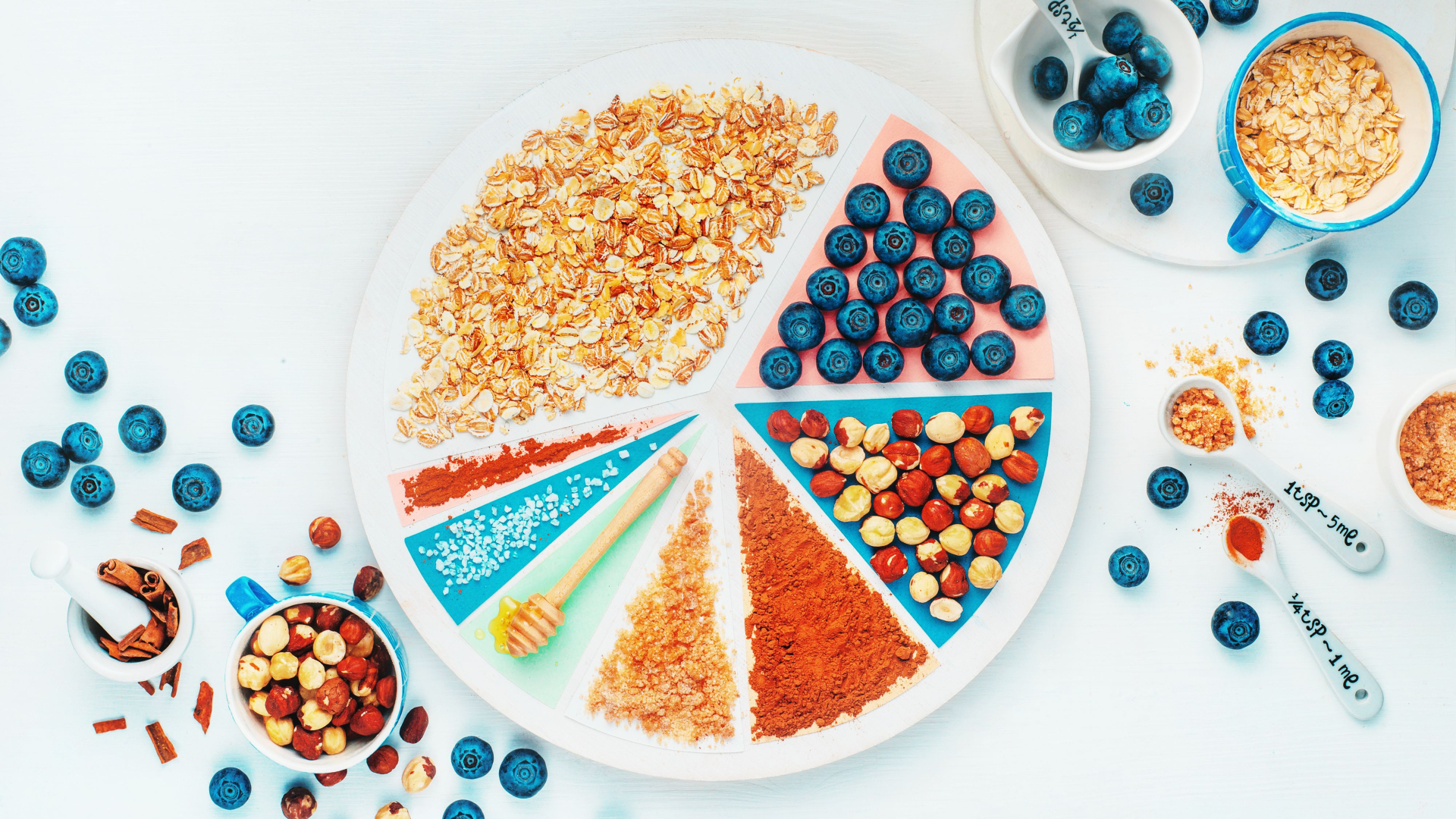
How much does what you eat affect your skin, mind, energy, and mood? Here, four women give up their favorite comfort foods in order to put a nutritionist-approved meal plan to the test, all in favor of looking and feeling better. Will it push them to new heights? Find their stories below.
Eating My Feelings: "I want to level out my emotions"
After months of hard work, my New Year's resolution—to exercise and eat right—had gone kaput. I had stopped packing lunches, and instead of hitting the gym, I was back to hitting snooze. Recession blues had me craving my comfort foods—a bowl of Honey Nut Cheerios or Papa John's pizza for dinner. The only resolution I had managed to actually *keep* was kicking my soda habit. But the caffeine withdrawal left me cranky, and normal annoyances, like a delayed train on the way to work, sent me into a blind rage. It was clear my generally good mood had been derailed.
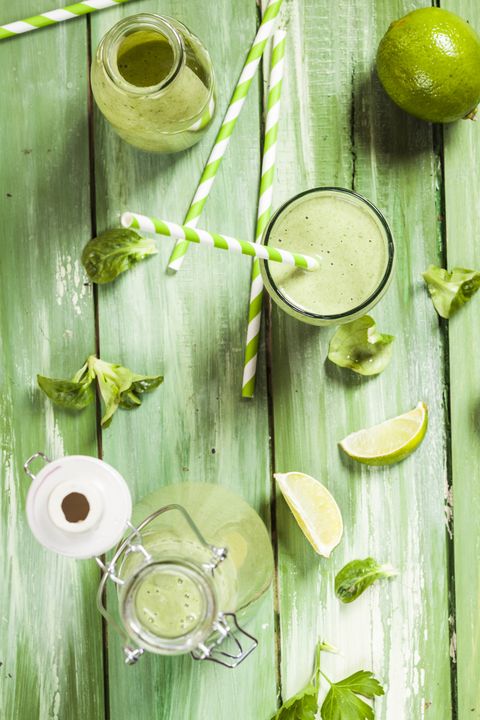
I got in touch with Susan Kleiner, Ph.D., coauthor of The Good Mood Diet, to see if I could, in fact, eat my way to happiness. I liked that Kleiner's diet wasn't overly rigid—I could have a glass of red wine after week one and indulge in a bite-size piece of chocolate or a cup of sorbet every weekend to satisfy cravings.
The biggest dietary change I'd have to make was adding whey protein to my mid-morning snack. While her book suggests homemade smoothies, Kleiner recommends a yogurt substitute for people like me, who don't have time to make them. To one cup of plain nonfat yogurt I added a packet of Splenda and half a scoop of whey protein. I was initially put off by the whey—I associated it with bodybuilders, and although my goal wasn't losing weight, the last thing I wanted to do was put it on. "You're not going to bulk up," she assured me. "You're adding the equivalent of 2 ounces of chicken—it's the best way to get protein without extra fat." Protein, an amino acid high in tryptophan, helps elevate mood-boosting serotonin in the brain and would help me chill out under pressure.
After week one, I was feeling pretty good. I channeled my newfound optimism into finally ending my monthlong gym hiatus and eased back with a 30-minute run on the treadmill. Exercise, which releases feel-good endorphins, also promotes a perky mood.
By the end of week two, I was still on my nothing-can-get-me-down high.
Minor setbacks weren't erupting into full-on flare-ups, either. When my boyfriend showed up an hour late for our dinner date after "losing track of time" playing basketball, the old me would have sent angry "Where the hell are you?" texts every five minutes. Instead of fuming, I dialed a friend whose call I hadn't returned in days—an unexpected upside to having a rare extra hour on my hands.
By the end of week two, I was still on my nothing-can-get-me-down high. And while I'll probably return to my tired (but easy) turkey sandwiches for lunch, I'm hooked on Kleiner's high-energy snacks, because the added protein keeps me from dipping into the office's crash-and-burn chocolate stash. I'm sure my fellow commuters will appreciate the blood-sugar upgrade.
Get exclusive access to fashion and beauty trends, hot-off-the-press celebrity news, and more.
Beauty Bites: "I want to prevent persistent breakouts"
By Yael Kohen, 29
Over a few short weeks last summer, my skin went from crystal clear to alarmingly blemished, a strip of deep, red zits sprouting up across the right side of my jawline. My doctor said a hormone imbalance was causing the flare-ups and prescribed a skin-friendly birth-control pill, which would take three months to work. But I was desperate for results, fast.
That's when I came across a new study citing acne reduction in people on the low-carb South Beach Diet. While I was already a pretty healthy eater, I'd noticed that my intake of splurgey treats—bagels, burgers, saucy Chinese food—had crept up in the past year. Never a fan of strict plans, I called nutritionist Lisa Drayer, author of The Beauty Diet, to see if some tweaks to my current regimen could help clear my complexion.
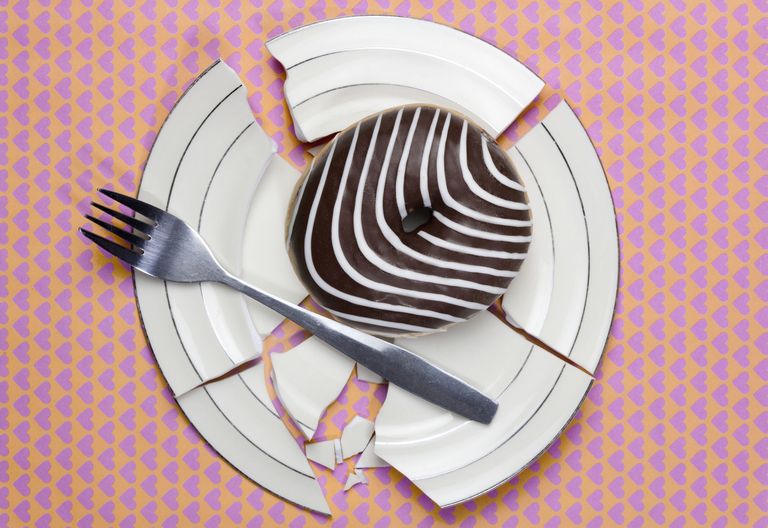
At my first session, Drayer mapped out her top 10 beauty foods (see sidebar), recommending I eat at least one per meal. She also set some ground rules:
1. Cut out refined carbs and limit sweets—they cause hormonal changes that lead to blemishes.
2. Add omega-3-rich foods like salmon and walnuts to reduce inflammation.
3. Up my intake of zinc-filled, skin-repairing foods such as crab, oysters, and dark-meat poultry.
4. Drink plenty of water and only one cup of moisture-leaching coffee a day. Alcohol, which amps up skin redness, is out for two weeks.
Minus the there-goes-my-social-life vibe, the diet seemed easy enough—brown-rice sushi didn't taste so different from the regular kind, and I should've nixed the 4 p.m. cupcake long ago. What suffered was my bank account: Salmon is one of the pricier items at supermarkets, and blue-berries—which I was to eat every morning for their antioxidant-rich, antiaging benefits (as if acne wasn't enough to worry about)—can cost about $5 per pint.
The weekends were the toughest. One Saturday night, a case of the munchies had me chowing down on a burger at midnight.
Otherwise, on most nights at home, I could handle sautéing spinach with tomatoes or heating up Trader Joe's tasty Sweet Potato Bisque as a side to store-bought rotisserie chicken. For dessert, I'd pop a few squares of dark chocolate and eat an orange for the kick of collagen-boosting vitamin C. But it was the weekends that were the toughest. One Saturday night, after drinking several vodka sodas (I was at a party!), a case of the munchies had me chowing down on a burger at midnight (oops).
Even so, after a few weeks on Drayer's plan, I noticed an improvement: The acne started to clear, and my skin felt miraculously smoother and more hydrated. It was motivation enough for me to add her healthy-eating principles to my daily diet—even if just part-time. As for the antiaging perks? I'll let you know in 10 years.
Energy Savers: "I want to beat the late-day burnout"
By Meredith Bryan, 29
The first time I speak to Ashley Koff—the Los Angeles-based nutritionist who will attempt to cure, via her energy diet, my habit of collapsing in a puddle of drool on my keyboard each day at 4 p.m.—I am impressed, and a little scared, by her sunny California peppiness. She's calling from the land of cardio kickboxing and early-morning farmers' markets. In New York, we dream about that life, then we order another saketini. On a Tuesday. We blow off the gym to go to the office on weekends. We diet by skipping dinner.
In New York, we dream about that life, then we order another saketini. We diet by skipping dinner.
I worry that Koff's plan won't gel with my hectic, sleep-deprived lifestyle. I'm a vegetarian, yes, but the kind inclined to dinner rolls, not lentils. And I refuse to relinquish $4 double Americanos from my adorable neighborhood coffee shop (the only reason I get out of bed most weekdays).
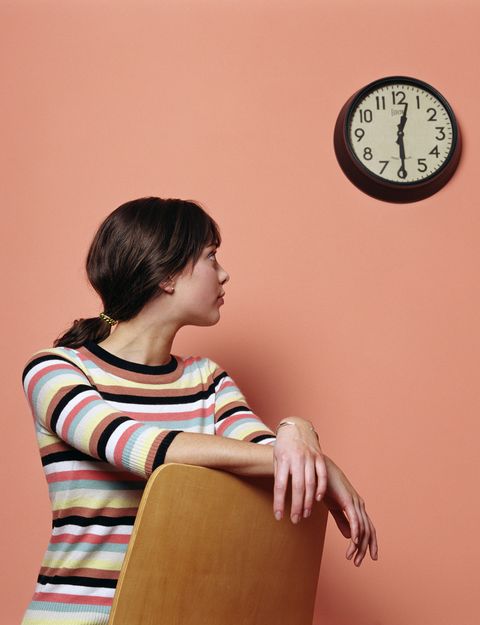
Koff says that lack of energy is her patients' top complaint, and explains that my body is designed like a race car, not a streetcar—meaning it needs a pit stop every three hours to fuel up on a mix of carbs, fat, and protein. I tend to feel more like the Oldsmobile beater I drove in high school, but maybe that's because my diet lacks consistency. In any given week, I yo-yo between virtuous salads and "screw it" fried Tater Tots. Koff praises my occasional blueberry shakes—holdovers from a short-lived health kick a few years ago—but blames my frequent morning bagels for the fact that I stumble out of the office in a daze mid-afternoon to forage for Japanese chewy candies (of course, what I really want is . . . cheesecake).
The plan initially seems like a lot of work. I prefer diets involving a simple list of "yes" and "no" foods—that way, when I inevitably overeat, I can just starve myself later. But "eating occasions" every three hours, Koff swears, will keep me energized, since protein and good fats kick in after carbs' more immediate boost expires. So I dutifully stock the office fridge with options like celery sticks, hummus, avocados, nuts, and oat crackers. Carbs are limited to "fist-sized portions" to prevent precipitous energy crashes.
On Monday, my first day on the plan, I start off buzzing from the eight hours of sleep Koff insisted I get the night before. I check items off my to-do list with a vigor I haven't felt in years. Of course, just because I'm never hungry doesn't mean I don't eat the hummus calling to me from the office kitchen between "eating occasions." At least I'm not bingeing on Twizzlers.
But after a week, I notice I'm not losing weight. Not that that was the goal here, but after seven days of fist-sized portions, I would have welcomed it. I blame almond butter, which is one part ground nuts, one part crack. Koff counts it as protein and fat, making it an easy snack. She suggests one tablespoon; I regularly inhale four.
But despite my struggle with portion control, the energy benefits of the plan persist. Even when I get four hours' sleep on a deadline. And drink four glasses of wine instead of the one Koff suggests. What initially seemed like an annoyance—eating every three hours—quickly becomes second nature. How did I ever eat just one meal at work? What did I look forward to?
I prefer diets involving a simple list of "yes" and "no" foods—that way, when I inevitably overeat, I can just starve myself later.
After the two weeks are over, I'm still making regular visits to the office fridge, experimenting with small meals of Greek yogurt, berries and nuts, or frozen veggie burgers with avocado. Food is not just for workday procrastination and indulgence, it turns out; it's also useful for staying awake! Koff predicted I soon wouldn't need my Americanos, and she's right—I don't. But I keep drinking them anyway. Some "eating occasions"—for me, caffeine, cheese, the occasional burrito binge—will always be about more than just fuel.
Food for Thought: "I want to sharpen my memory"
By Kara Jesella, 33
When did I first realize my memory wasn't quite what it used to be? I can't remember. (Uh-oh.) But an inability to conjure, say, the last name of a guy I had a crush on in grade school went from merely annoying to downright alarming once I was accepted into a master's program. I'd spent years hoping to return to school; now I had images of blanking during class, a sure prelude to a case of social-anxiety disorder and a report card full of F's.
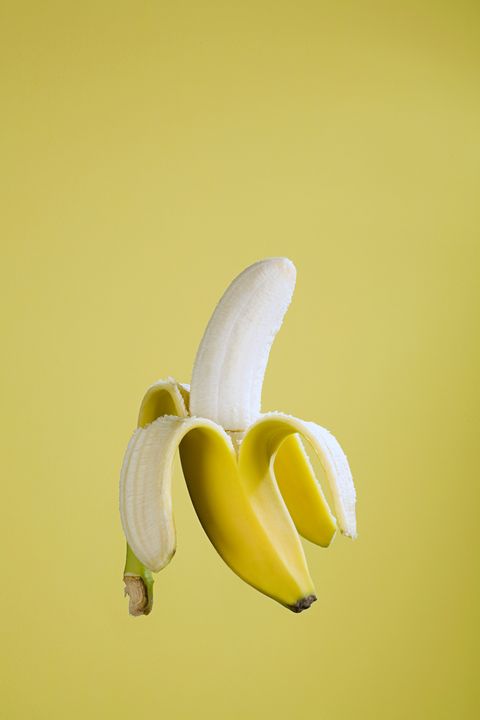
Desperate, I turned to Frank Lawlis, Ph.D., coauthor of The Brain Power Cookbook. "We have done studies with students that show that changing the food you eat will increase your memory," he says. That didn't sound too hard. In fact, I had long ago eighty-sixed from my diet most of the foods Lawlis thinks are, quite literally, mind-numbing: anything with preservatives (they slow down the flow of oxygen); pesticides (they can be toxic); and processed foods, especially those with added sugar, which "keep the brain starved half of the time." Lawlis approved of my diet staples—yogurt, salads—and liked that I usually ate protein at every meal and saved my carbohydrates for dinner. But he recommended I add some additional brain-boosting foods, including raw fish for its omega-3 fatty acids, which improve intellectual performance; eggs for choline, which helps prevent cloudy thinking; lean red meat, which has iron that helps the brain's blood flow; and fruits and vegetables, especially those high in antioxidants and/or potassium, like berries, bananas, and carrots.
"What's the name of the place we stayed in Sardinia?" my boyfriend asked me a few days later as I ate a yogurt with banana on top. I looked at him blankly. I remembered it started with a "C." I had no idea. "Cagliari!" He was triumphant; I was not.
But let's give the banana a break; it takes 20 to 30 minutes for the food you eat to affect your memory. What you eat has a minute-by-minute effect on your brain, which means that every bite you take is an opportunity to make yourself less forgetful. Of course, following Lawlis's diet over the long term means building up a better memory over time. I wanted to see if I could get immediate results and decided to try to time my meals to when I needed extra recall power.
What you eat has a minute-by-minute effect on your brain, which means that every bite you take is an opportunity to make yourself less forgetful.
That Wednesday, for breakfast, I ate two soft-boiled eggs with cheese and drank a cup of coffee (Okay with Lawlis, though he prefers green tea). As I read about Pop Art for my art history class, I couldn't tell if I was retaining more than I normally would have, but I definitely felt satiated and focused. At lunchtime, I ate sushi with a small green salad. Lawlis advocates exercising lightly and to a beat, so when I was done, I cranked up my iPod and took an hour-and-a-half walk to school. In class, other students appeared to be impressed with me as I pontificated about Andy Warhol; I certainly was impressed with myself.
Should I thank the organic blueberries? Lawlis notes that medicine works much better for people who believe in its effectiveness. "If you're eating food with a purpose other than that it just tastes good, then it will be more usable to the body," he says. It's hard to say, then, whether it was my belief in the power of what I was eating, or the actual food itself that made the difference. Either way, after about two weeks on the remarkably easy eating plan, I felt really good; I'll definitely continue to emphasize the recommended foods in my diet, which almost any doctor would agree are healthy—whether your goal is photographic recall or not. Plus, Lawlis even allows wine and beer. Preferably not right before class.
Dedicated to women of power, purpose, and style, Marie Claire is committed to celebrating the richness and scope of women's lives. Reaching millions of women every month, Marie Claire is an internationally recognized destination for celebrity news, fashion trends, beauty recommendations, and renowned investigative packages.